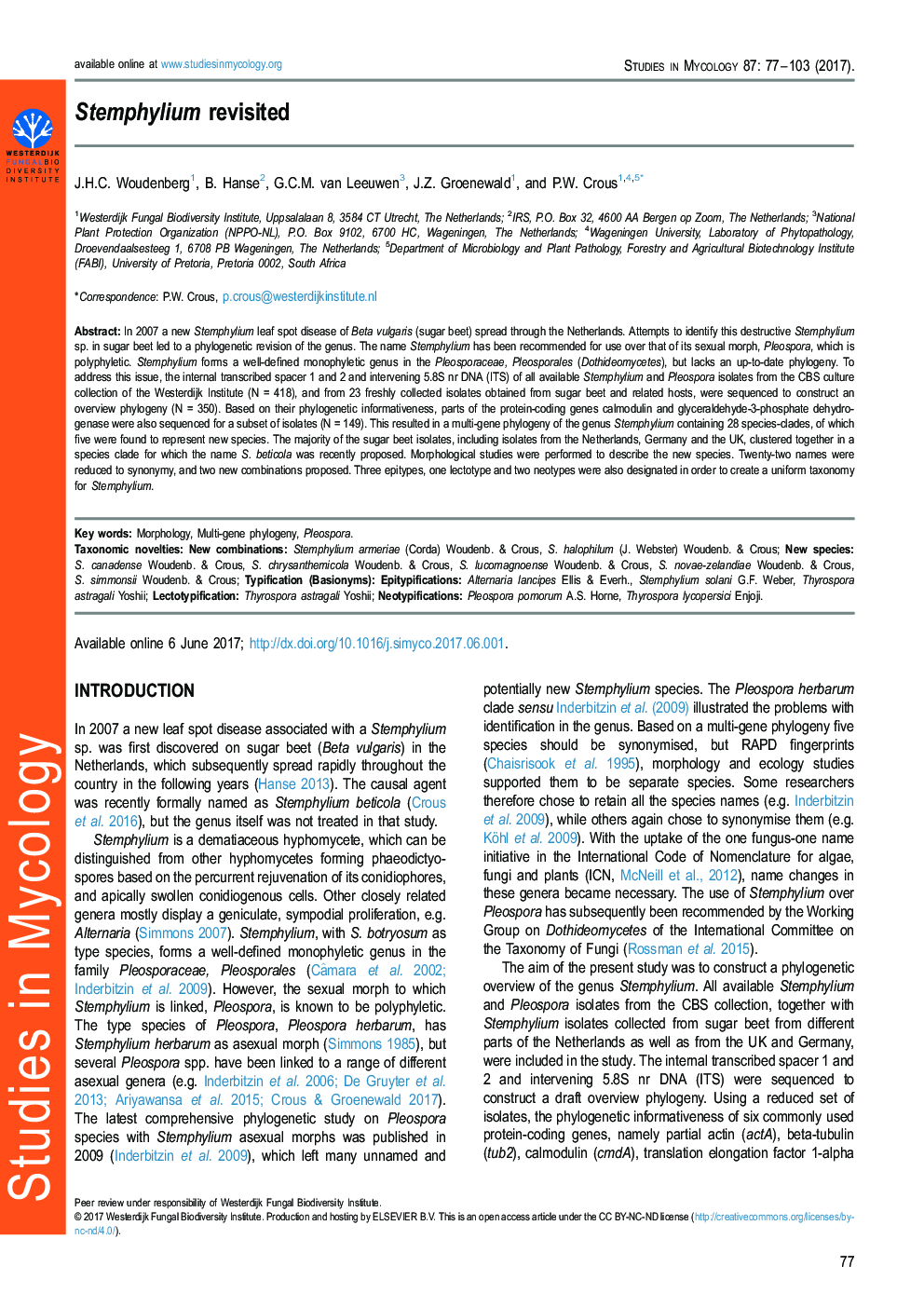| Article ID | Journal | Published Year | Pages | File Type |
|---|---|---|---|---|
| 5740990 | Studies in Mycology | 2017 | 27 Pages |
In 2007 a new Stemphylium leaf spot disease of Beta vulgaris (sugar beet) spread through the Netherlands. Attempts to identify this destructive Stemphylium sp. in sugar beet led to a phylogenetic revision of the genus. The name Stemphylium has been recommended for use over that of its sexual morph, Pleospora, which is polyphyletic. Stemphylium forms a well-defined monophyletic genus in the Pleosporaceae, Pleosporales (Dothideomycetes), but lacks an up-to-date phylogeny. To address this issue, the internal transcribed spacer 1 and 2 and intervening 5.8S nr DNA (ITS) of all available Stemphylium and Pleospora isolates from the CBS culture collection of the Westerdijk Institute (N = 418), and from 23 freshly collected isolates obtained from sugar beet and related hosts, were sequenced to construct an overview phylogeny (N = 350). Based on their phylogenetic informativeness, parts of the protein-coding genes calmodulin and glyceraldehyde-3-phosphate dehydrogenase were also sequenced for a subset of isolates (N = 149). This resulted in a multi-gene phylogeny of the genus Stemphylium containing 28 species-clades, of which five were found to represent new species. The majority of the sugar beet isolates, including isolates from the Netherlands, Germany and the UK, clustered together in a species clade for which the name S. beticola was recently proposed. Morphological studies were performed to describe the new species. Twenty-two names were reduced to synonymy, and two new combinations proposed. Three epitypes, one lectotype and two neotypes were also designated in order to create a uniform taxonomy for Stemphylium.
